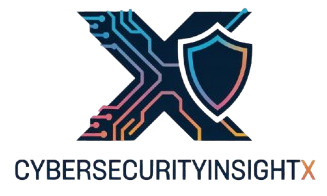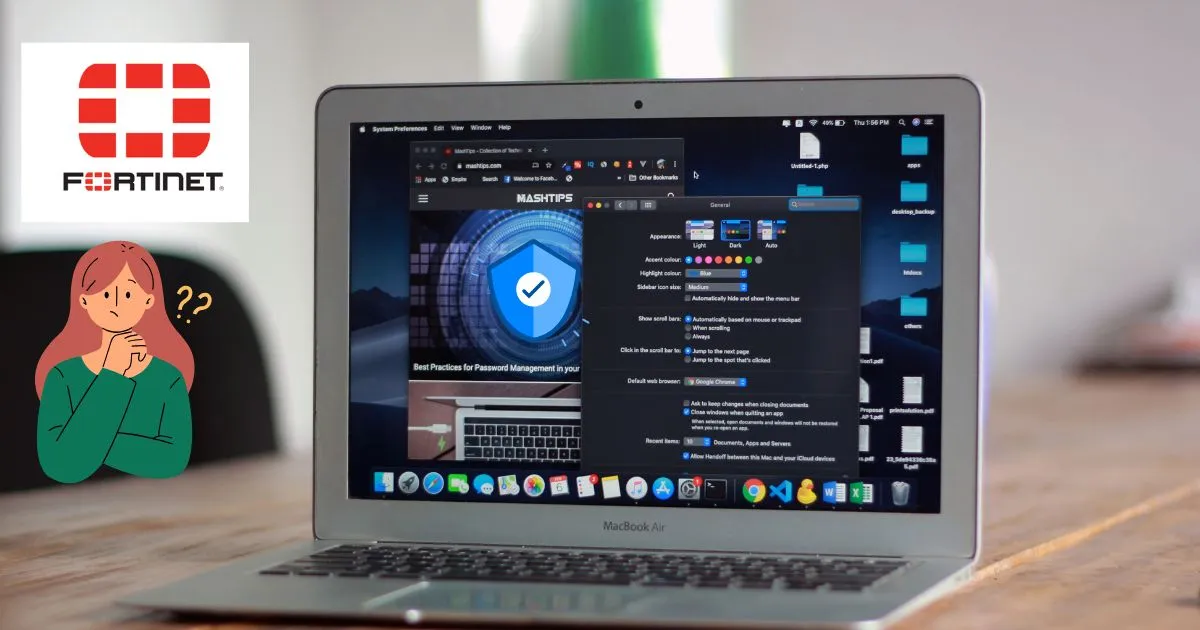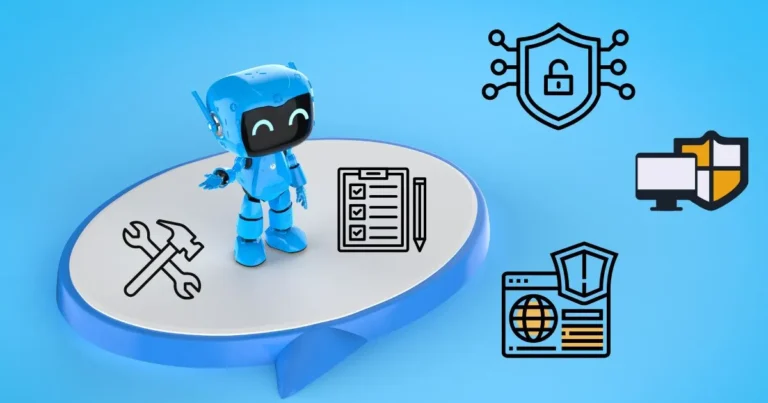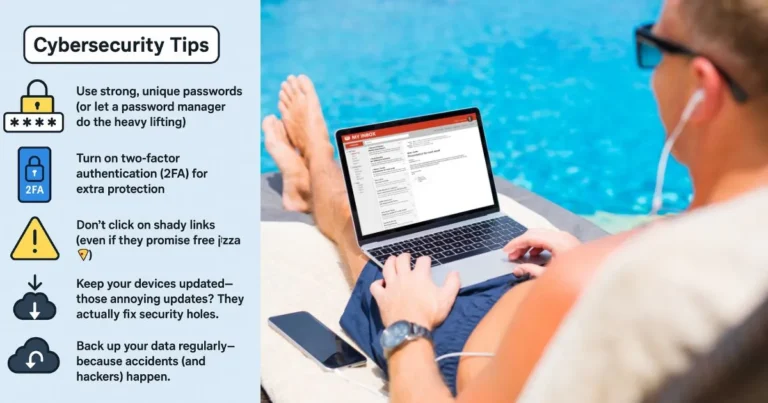Fortinet: The Game-Changing Cybersecurity Champion of 2025
“If you think your firewall is enough, think again — Fortinet is rewriting the rules of cybersecurity, and you need to catch up.”
In a world where a cyberattack occurs every 39 seconds, your security posture can either make or break your organization. While names like Cisco or Palo Alto often dominate the headlines, Fortinet has silently and steadily climbed to the top — and it’s now redefining how modern businesses should think about cybersecurity.
If you’re serious about protecting your assets, scaling secure networks, or leading digital transformation, it’s time to take a closer look at Fortinet.
Table of Contents
The One Cybersecurity Giant You’re Not Paying Enough Attention To: Fortinet
What is Fortinet?
Founded in 2000 and headquartered in Sunnyvale, California, Fortinet is a global leader in broad, integrated, and automated cybersecurity solutions. Known primarily for its FortiGate next-generation firewalls, the company also offers a comprehensive portfolio including:
- Secure SD-WAN
- Zero Trust Access
- Cloud Security (AWS, Azure, GCP)
- Endpoint Detection & Response (EDR)
- SIEM, SOAR, and Network Access Control (NAC)
- Security-driven Networking
Fortinet protects over 680,000 customers worldwide and is recognized by Gartner, Forrester, and IDC as a consistent leader in cybersecurity innovation.
Why Fortinet Stands Out in 2025
1. Security-Driven Networking
Most cybersecurity vendors adapt after threats emerge. Fortinet integrates security directly into the network infrastructure. This proactive approach reduces complexity, cost, and gaps in defense — especially in hybrid and cloud-native environments.
2. Fortinet Security Fabric
The Fortinet Security Fabric is a unique architecture that connects all Fortinet solutions — firewalls, endpoint, email, cloud, apps, even third-party tools — into one unified platform. It enables:
- Centralized management
- End-to-end visibility
- Automated threat response
- Seamless scalability
3. High-Performance Hardware (FortiASIC)
At the heart of FortiGate lies custom ASIC technology, not generic CPUs. This enables ultra-fast throughput and low latency, making Fortinet a performance beast — crucial for high-speed networks and real-time analytics.
4. Zero Trust Access (ZTA)
In 2025, Zero Trust is no longer optional. Fortinet’s ZTA model goes beyond basic identity control. It validates users, devices, and context before granting access — even inside the network perimeter.
Fortinet vs. The Competition
| Feature | Fortinet | Cisco | Palo Alto |
|---|---|---|---|
| Integrated Fabric | ✅ Yes | ❌ Partial | ❌ Partial |
| Custom Hardware | ✅ Yes (ASIC) | ❌ No | ❌ No |
| SD-WAN Built-in | ✅ Native | ❌ Add-on | ✅ Native |
| Unified Threat Management | ✅ Full stack | ❌ Fragmented | ✅ Limited |
| Licensing Simplicity | ✅ Streamlined | ❌ Complex | ❌ Complex |
If you’re looking for cost-effectiveness, scalability, and real-time protection, Fortinet takes the lead in almost every scenario — especially for SMBs and mid-market enterprises.
Fortinet in Action: Real-World Use Cases
Small Business (25–200 employees)
- FortiGate 40F with FortiSwitch and FortiAP
- Centralized cloud-based management via FortiCloud
- Outcome: 45% fewer phishing attacks, 60% reduction in bandwidth abuse
Industrial Network Security (OT/IoT)
- FortiNAC + FortiSIEM to secure legacy devices
- Behavioral analytics and network segmentation
- Outcome: Prevented lateral movement from ransomware in simulated Red Team scenario
Hybrid Cloud Deployment
- FortiGate VM on Azure and AWS
- FortiWeb WAF for app protection
- Outcome: Full East-West and North-South traffic visibility, improved compliance with ISO27001
Getting Started with Fortinet
Want to test the waters? Here’s a roadmap for implementing Fortinet in your security stack:
- Start with FortiGate NGFW — either physical or virtual appliance
- Add FortiAnalyzer or FortiManager — for centralized logging and management
- Layer in Endpoint Protection (FortiEDR) — for visibility across users and devices
- Implement Zero Trust and MFA — using FortiAuthenticator & FortiToken
- Scale with FortiCloud — and secure remote/hybrid workforces seamlessly
💡 Bonus Tip: Fortinet offers a Free NSE Training Program — a fantastic way for IT pros to get certified and hands-on experience.
Why U.S. Businesses Should Care About Fortinet
In the U.S., where data privacy laws (like CCPA, HIPAA, and PCI-DSS) are increasingly strict, Fortinet’s compliance-ready solutions provide a strong foundation for risk management.
Also, Fortinet’s extensive presence — including partnerships with federal agencies and Fortune 500s — ensures it’s not just scalable but also battle-tested in high-risk environments.
Fortinet FAQ
What is this company known for in cybersecurity?
This leading cybersecurity firm is recognized for protecting digital infrastructure across diverse environments — from startups to global enterprises. Its solutions safeguard networks, data centers, endpoints, cloud workloads, remote teams, and IoT devices.
At the core of its offerings are next-generation firewalls equipped with advanced features like intrusion prevention, antivirus, application control, web filtering, and VPN. These systems integrate with a broader security architecture that includes Zero Trust Network Access (ZTNA), Secure SD-WAN, extended detection and response (XDR), and centralized threat intelligence.
The brand is especially valued for its high-performance hardware, automation capabilities, and seamless orchestration across hybrid environments.
Is it a better option than Cisco?
That depends on your IT priorities. However, for many use cases — particularly for SMBs or hybrid cloud infrastructures — this provider has several advantages.
It manufactures its own custom processors, which allow its firewalls to achieve high throughput with low latency. In contrast to Cisco’s sometimes fragmented ecosystem, this company delivers unified security solutions with native integration, resulting in streamlined deployment and centralized control.
Organizations looking for performance, integration, and cost-effectiveness may find this vendor a more attractive choice.
How much do their solutions typically cost?
Pricing varies based on product category, deployment size, and service subscriptions. Here’s a general idea:
- Entry-level firewalls (for small businesses): $400–$1,500
- Mid-range appliances: $3,000–$10,000
- Enterprise-grade models: $20,000 and up
- Annual security service subscriptions: $100–$2,000+
- Cloud-based or virtual options: Prices fluctuate by platform (AWS, Azure, GCP)
One of the main selling points is its transparent licensing and lower total cost of ownership compared to some major competitors.
What does CVE mean in this context?
CVE stands for Common Vulnerabilities and Exposures, referring to security flaws disclosed publicly. When such issues are discovered in this vendor’s products, they are cataloged with unique CVE identifiers.
Example:
- CVE-2023-25610: A critical vulnerability in the operating system enabling remote code execution.
Security teams should routinely monitor vulnerability databases (e.g., NVD, MITRE, or the vendor’s advisory center) for patches and risk mitigation strategies.
Where is this company headquartered?
The global headquarters is based in Silicon Valley:
📍 899 Kifer Road
Sunnyvale, CA 94086
United States
It also maintains regional hubs throughout North America, Europe, the Middle East, Asia-Pacific, and Latin America.
Are there any known vulnerabilities?
Yes — as with any large-scale cybersecurity provider, vulnerabilities occasionally arise. The most frequent ones involve:
- VPN configuration flaws
- Remote code execution bugs
- Issues with SSL/TLS implementations
- Authentication bypass scenarios




